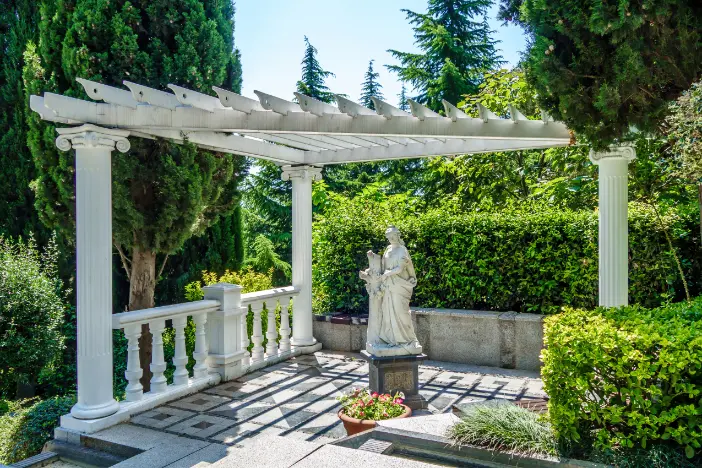
Pergolas – Overhead shade latticework
Pergolas look similar to gazebos but aren’t as grand. Their name comes from the Late Latin word “pergula,” which means “projecting eave.”
They’re are made of several vertical posts or pillars with no walls. On top of these are cross beams to create a flat roof, and on some, you’ll have an open lattice or screens. This means that normally, it isn’t 100% shaded underneath unless you pull a canvas or tarp over the top.

Materials
Historically, pergolas used stone and brick in their construction. However, in modern times, more durable options are available, so you’ll see:
- Fiberglass
- Wood
- Vinyl
Purpose & Use
Pergolas shade walkways so you can get from one pavilion or building to another. They also give you some shelter on an open terrace. Below, you can also place seats or benches to create sitting areas.
These structures are excellent for growing vining plants and add a more natural feel to the area. But while they’re great for shade, they provide little rain protection. They’re mainly used for air circulation and as an extension of your home or patio.
History
This garden feature first appeared in ancient Egypt, back in 1,400 BC. The first is believed to be in a Theban high court. In those times, only the most privileged Egyptians could use pergolas to shade themselves from the hot sun.
The ancient Romans used them in their villas too. During the 17th century, during the Great Italian Renaissance, stone pillared versions provided not only shade but also a place to grow grapes for wine.
Pergolas suffered a decline in popularity in the next centuries since they were too artificial for the naturalistic gardening styles that many favored. But they experienced a revival in the 20th century, thanks to the Arts and Crafts movement in Britain.
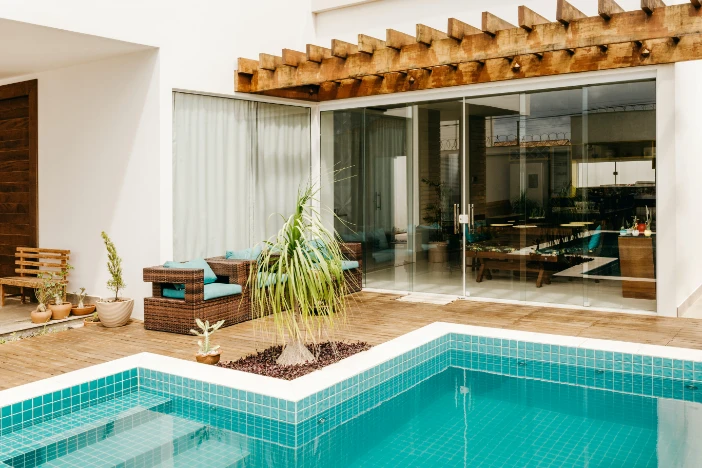
Placement
As we’ve said earlier, pergolas are placed in between pavilions or buildings. Many homeowners connect theirs to their property.
However, you can also have freestanding structures, which can go anywhere in your yard. You can place them where you need shade or would like to grow vining plants.
Designs & Styles
You can have attached or standalone pergolas, as well as cantilevered ones. This offers you a middle ground, as the roof is supported by a single post. As a result, there’s a floating effect that’s very popular in modern homes.
The most commonly style is either rectangular or square and can have anything from plain to intricate elements.
For a more formal, elegant and dramatic aesthetic, choose an arched pergola. It’ll serve as an amazing decorative accent in your outdoor living space.
There’s also the gabled version if you want more shade. The rectangular or triangular-pitched roof is a godsend when the sun’s scorching rays threaten your outdoor time.
Modern Customizations
A useful type of customization is the motorized retractable roof. This allows you to control exactly how much shade or sun you get, and it’s easy and quick to do with a remote.
In addition, homeowners like to customize their pergolas with lighting (i.e. string lights and outdoor chandeliers), outdoor curtains, audio-visual systems, and fire pits or fireplaces.
Pergolas – Pros & Cons
PROS
- Aesthetically pleasing focal point
- Large multi-purpose structure
- Cost-effective
- “Green” feel
- Low-maintenance
CONS
- No protection from rain
- Lack of privacy
- Some materials fade easily
- Climbing vines may attract insects
- May require building permits
Shade structures with greater shelter
Pergolas are aesthetically pleasing and provide helpful shade in many instances. However, their open framework does not protect against rain or other elements. The next section of our guide details cabanas, which possess greater sheltering capabilities.

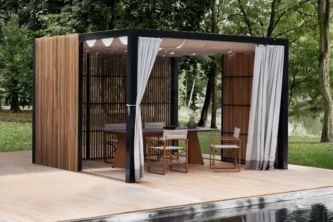
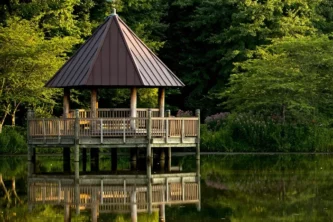
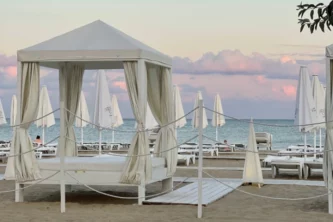
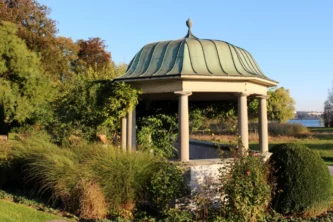
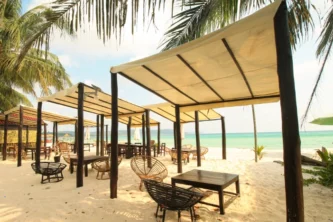
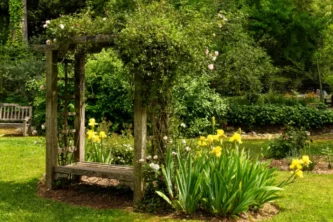




Leave a Reply